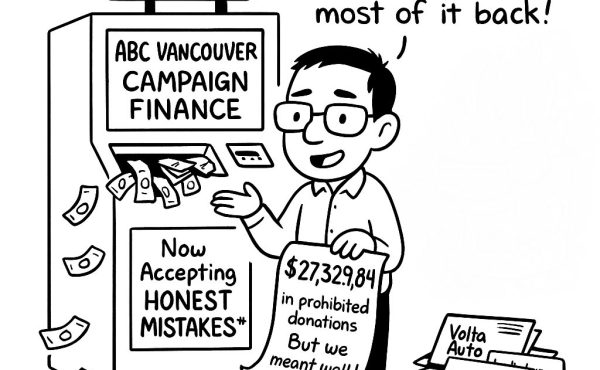

Key to any urban space is the green spaces in, between and around the buildings, roads and developments. A young, vibrant city such as Vancouver is much better situated to plan these things out and ensure a good balance. Older cities find this harder. Some decide to practically forego green spaces entirely like in Tokyo or Osaka, leaving grey, dreary messes. While others, like London, find a good balance but create sprawling landscapes larger than some other countries. If Metro and former Mayor Sam Sullivan are to be believed, Vancouver is on the brink of some pretty tough decisions about what it does with its urban and green spaces.
Metro Vancouver recently released a report to the city’s environment and parks committee recommending that parkland deemed to have a low recreational value, i.e. those places used least by the folks of Vancouver, will be sold off. The reasoning is that those spaces generate next to no income, are expensive to maintain and therefore do not represent fair value for money. Over the next 20-30 years, the amount of money required to maintain green spaces in and around the city is going to double.
The second problem is that Vancouver is a growing city. Urban economist, Ed Glaeser believes that the city is doing the right thing by building tall towers and surrounding them with bright, airy spaces. Sullivan, on the other hand, realises that the city is faced with a major dilemma as the city grows. Does it grow upwards to save green space in the area or does it sprawl like most cities?
Sullivan’s answer is to increase the urban density of the city. This would, if done badly, bring it more in line with beehive cities like Tokyo, but would save the green space and parks around the outside. Estimates suggest the city needs to find space for an extra million people in the next three decades. The problem, according to Sullivan, is that there is an institutional bias against creating denser living conditions.
In his vision, Vancouver would become more compact and higher. The principle aim of this venture would be to reduce transit times between the place where people live and the place where they work. But how can this work without getting rid of green spaces? This would necessitate the building of tower blocks interspersed with small greens, communal areas and playgrounds as opposed to single family two-storey houses with back and front gardens.
For a lot of people, that can be a hard sell, but the biggest problem is that those two storey houses take up a lot of space. Building out—as urban sprawl is also sometimes called—is expensive, not just to build those houses, but to buy on the market.
Metro’s staff report, however, recommends selling those relatively unused spaces in order to fund the money it needs to maintain the parks it has and to purchase new ones. These new ones will be used for new communities and areas developed to service the growing population. The question that must be asked is what will happen to those places of low recreational value? Will they too be developed? Turned into private residences with big gardens? Bought up by volunteer and nature conservation groups? Meanwhile, the report estimates the city will need a further 5,000 hectares of parkland to service the new communities.
Metro Vancouver is, of course, looking at other funding options for these and other sites. They need to make new sites, but how can they raise more money? At the moment, they generate income from people who use the parks on a pay as-you-go basis. This is unpredictable and unsustainable for the future. That said, some ideas like increasing taxes will not likely go down well with residents.
Regardless of what Vancouver Metro and those like Sullivan think, the city is facing the challenge of escalating costs for public places as well as a massive increase in population over the next three decades. Rather than turn a great, well-designed city into a mess through a lack of thought and planning, now is the time for people across Metro Vancouver to come together and make a viable plan that tries to maintain the regions liveability, but also accommodates the competing needs of people and their environment.
——–
Maria Tritton is a travel writer from England who specialises in transport arrangements and prepaid cards for travel money for holidays. After living for most of her life in the densely populated cities of London and New York she fully appreciates the challenges that lie ahead for the great city of Vancouver.



